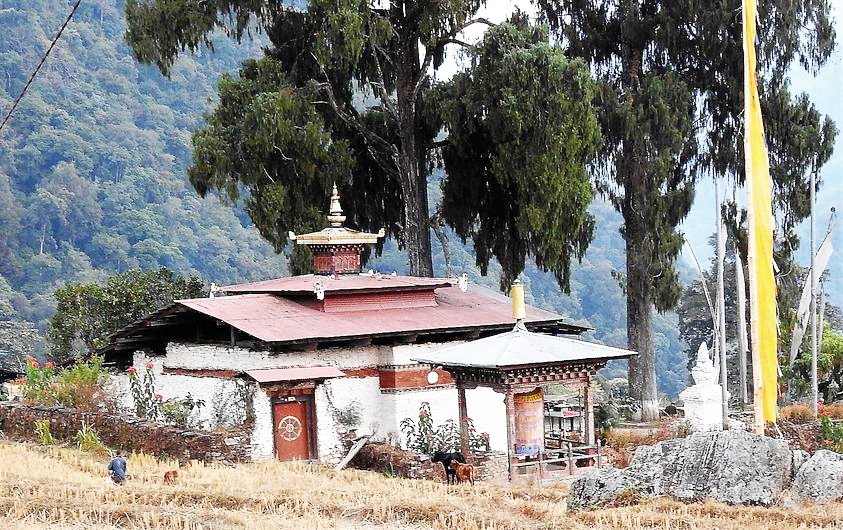
Nabji Lhakhang

Nabji Lhakhang, situated in the Nabji Valley of the Trongsa District in Bhutan, was established by Tashi Chödron, the daughter of Gep Sindhu Raja, who became the consort of Guru Rinpoche (Padmasambhava). Guru Rinpoche, an important figure in Tibetan Buddhism, is credited with bringing Buddhism to Bhutan and is highly revered throughout the region. Tashi Chödron’s initiative to build Nabji Lhakhang reflects the deep spiritual connection and the influential role that Guru Rinpoche and his consorts played in the spread of Buddhism in Bhutan.
Nabji Lhakhang is significant both historically and spiritually. The temple is not only a testament to the rich cultural and religious history of Bhutan but also serves as a vital site for Buddhist practice and pilgrimage. It represents the influence of Guru Rinpoche’s teachings and the enduring legacy of his consorts in shaping Bhutanese Buddhism. The lhakhang is known for its traditional Bhutanese architectural style, which includes intricate carvings and colorful religious murals. It also plays a central role in the local community, hosting religious ceremonies and festivals that are integral to Bhutanese cultural and spiritual life. Visitors and pilgrims come to Nabji Lhakhang to participate in its spiritual activities, paying homage to its historical and religious significance.
Related
- Chendbji Chorten
- Korphu Village
- Kuenga Rabten Palace
- Mangdue Foot Trail
- Nabji Lhakhang
- Semji Village
- Ta Dzong
- Threupang Palace
- Trongsa Dzong
- Yutong La Pass
Need Assistance?
Call Us : +975-17351324
+975-17495729
Email Us : adbhutantours@gmail.com
Send your Queries
